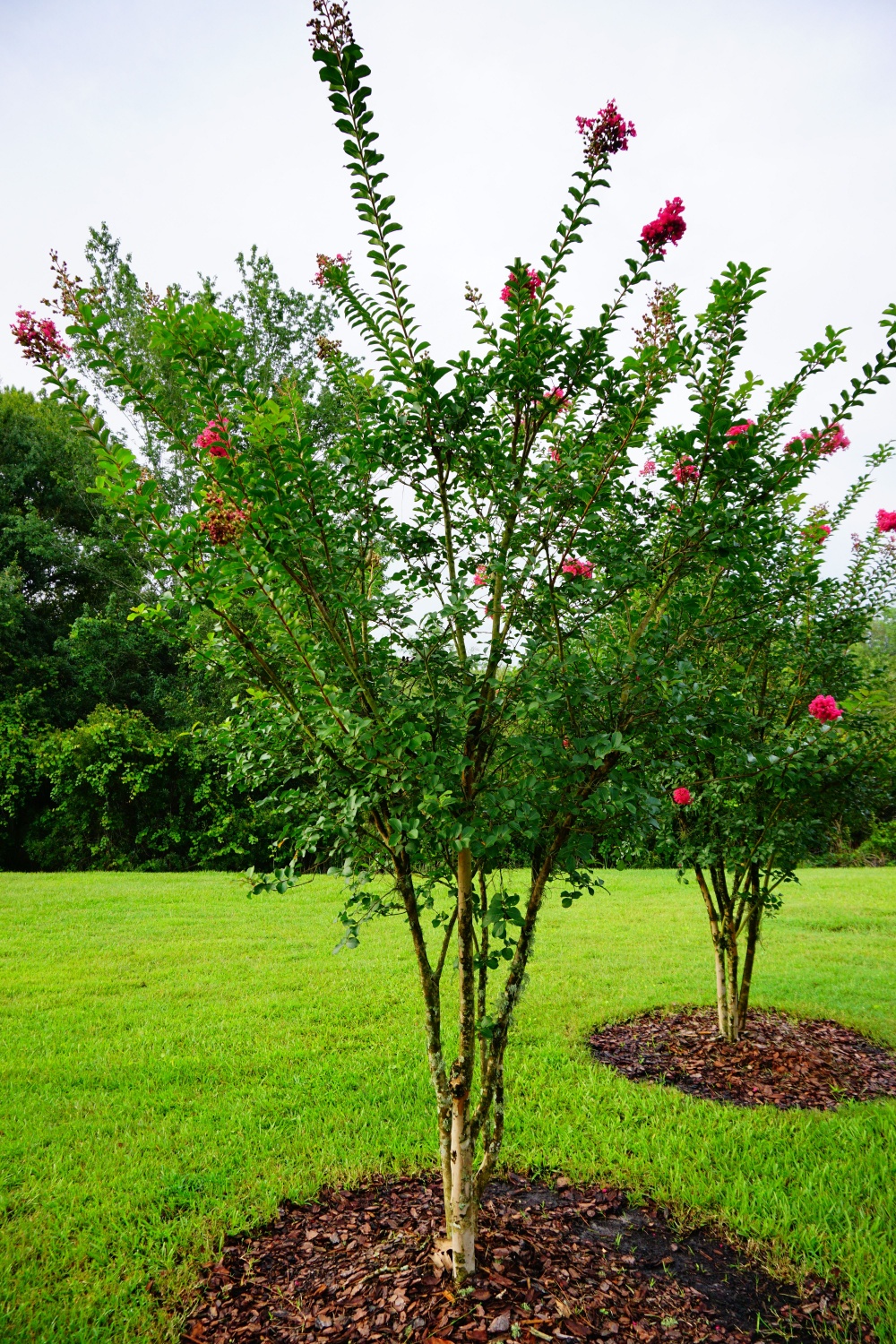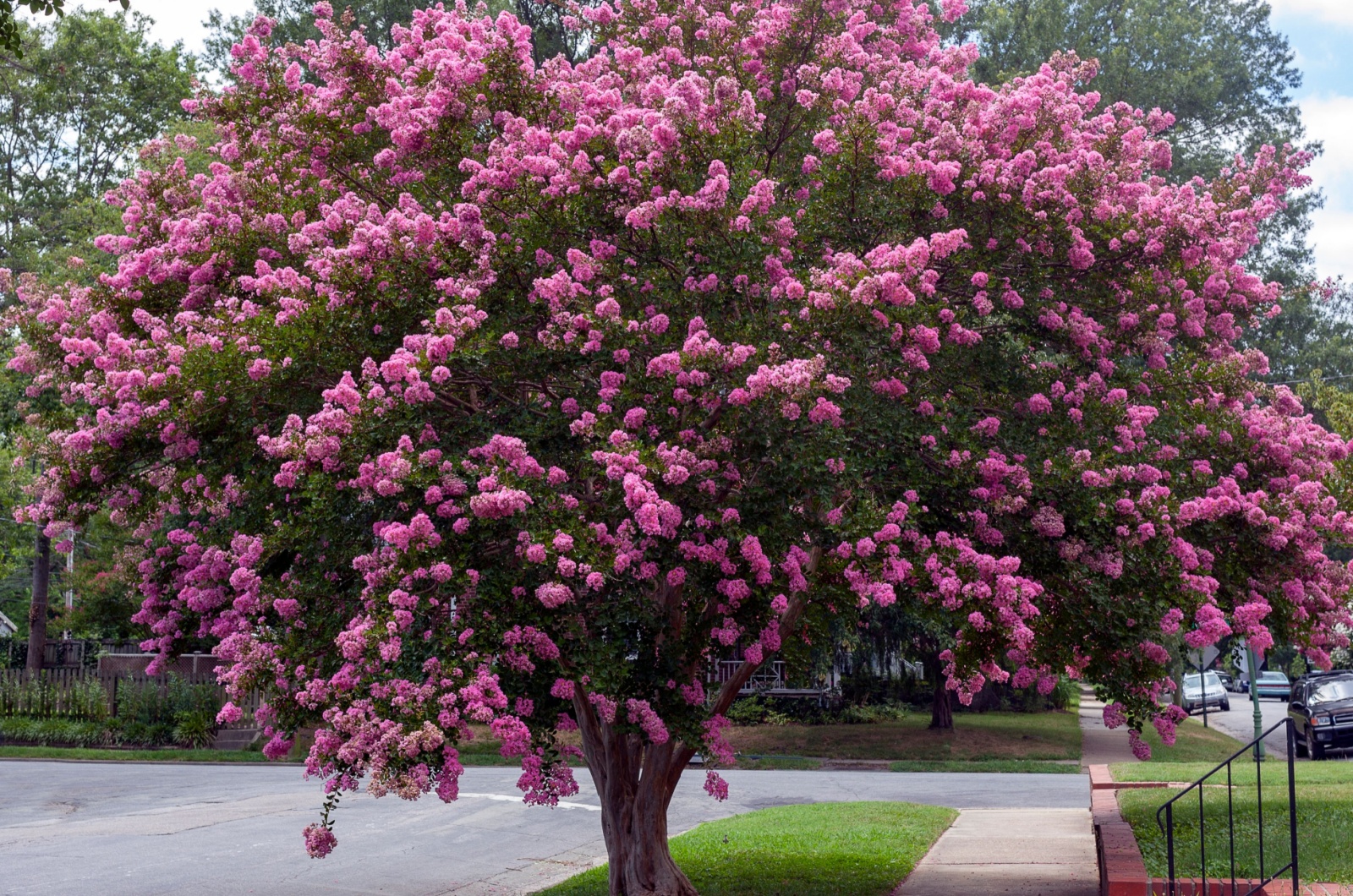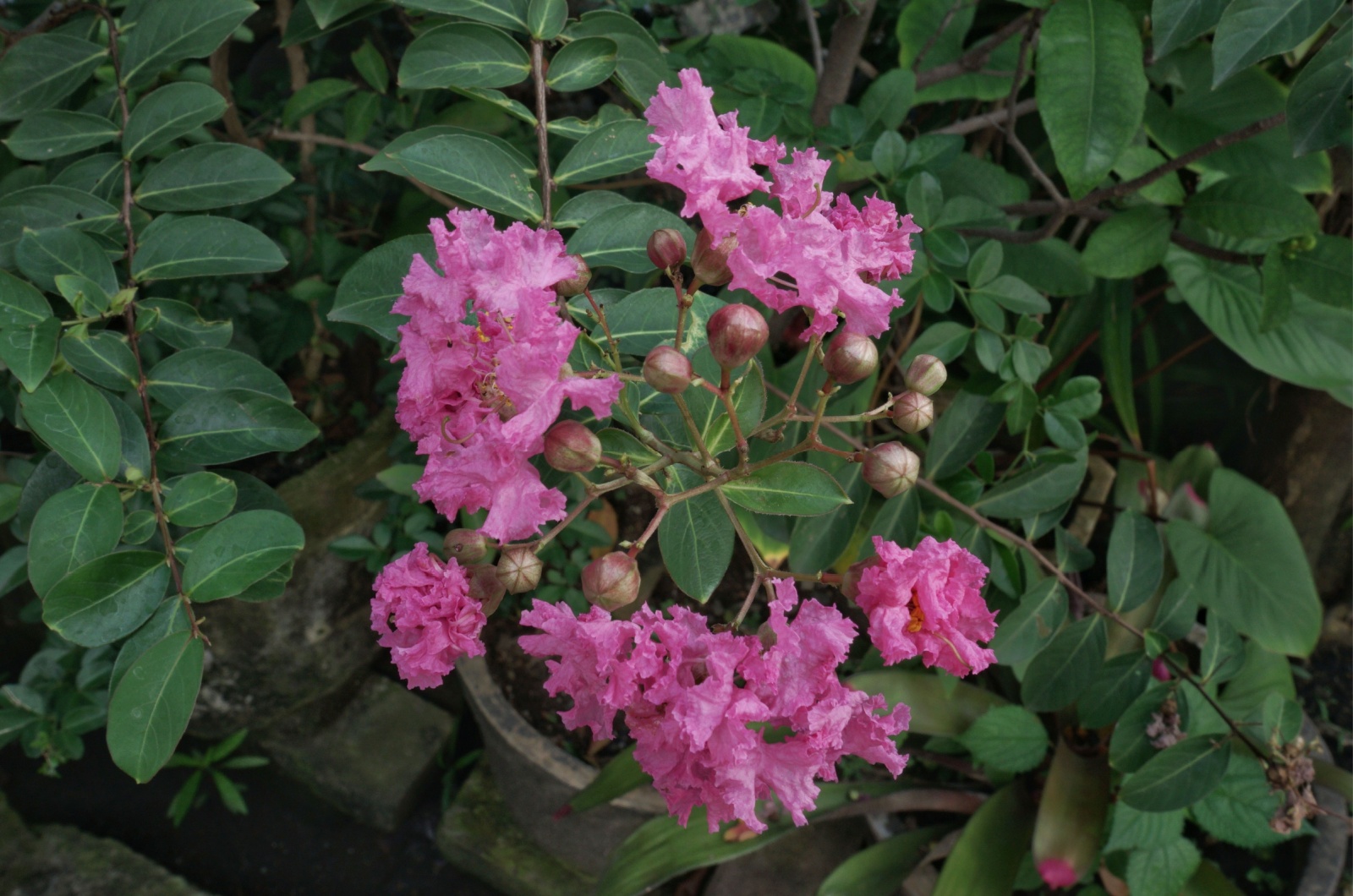Winter is just around the corner and your crepe myrtle needs some care before the cold hits!
Beautiful blooms, vibrant fall colors, and unique bark make these trees super popular, especially for those who live in warmer climates. But if you live somewhere chilly, crepe myrtles will need some extra loving to get through the winter.
Luckily, now is a great time to protect your trees and even plant more if you want!
Winterizing your crepe myrtle is easier than you think, and it will pay off with the most magnificent flowers come spring. All you have to do is…
1. Add Some Mulch Around Your Crepe Myrtle
If you have been winterizing shrubs, trees, or plants for some time now, you get the gist – applying mulch helps keep the soil warm and protects them from frost and freezing temperatures (our crepe myrtles are no exception!).
I’ve found that a 3-4 inch layer of mulch around my crepe myrtle really helps keep its roots nice and warm. You can use compost, leaf mold, or wood chips (a good scoop can help spread the mulch easily).
So, if you live in colder areas (USDA hardiness zones 6 and below), it’s especially important to winterize your crepe myrtles. They can get damaged if temperatures drop below 0°F, so take care of younger or potted plants!
2. Then, Wrap Those Trees In Burlaps
I know that peeling gray and brown bark adds to its beauty, but wrapping up the trunks is a smart move because it will protect them from winter weather, especially in areas that experience frost and freezing temperatures.
You can also skip late-season pruning to help the plant stay strong during winter (no worries, this won’t affect their blooming in the spring).
For a more natural look, consider using burlap, like this roll from Amazon – it can blend seamlessly into any landscape!
3. Don’t Forget To Protect Those Potted Ones As Well
If you have crepe myrtle in zone 6 or below, consider adding it to your container garden. This way, you can easily move it to a new spot or even indoors before the cold arrives.
Crepe myrtles in pots are more at risk in colder weather since their roots lack the insulation that in-ground plants have. This makes them susceptible to root damage, so you’ll have given them some extra love during winter.
To protect your container-grown crepe myrtles, move them to a sheltered area like a greenhouse, garage, or shed.
If that’s not an option, wrap the pots in burlap or blankets to keep the roots warm, and don’t forget to add a layer of mulch on top!
Please note that those grown in planters on rooftops or terraces might be even more sensitive to cold (that’s because they miss out on the ground’s warmth). In this case, I would recommend you go for some cold-hardy varieties like Muskogee or Natchez.
Knowing how to protect your crepe myrtle in colder regions is very important. With the right care and winter protection, you can look forward to a breathtaking view when spring arrives!
Related: Follow These 8 Easy Steps To Transplant Your Crepe Myrtle Like A Pro




